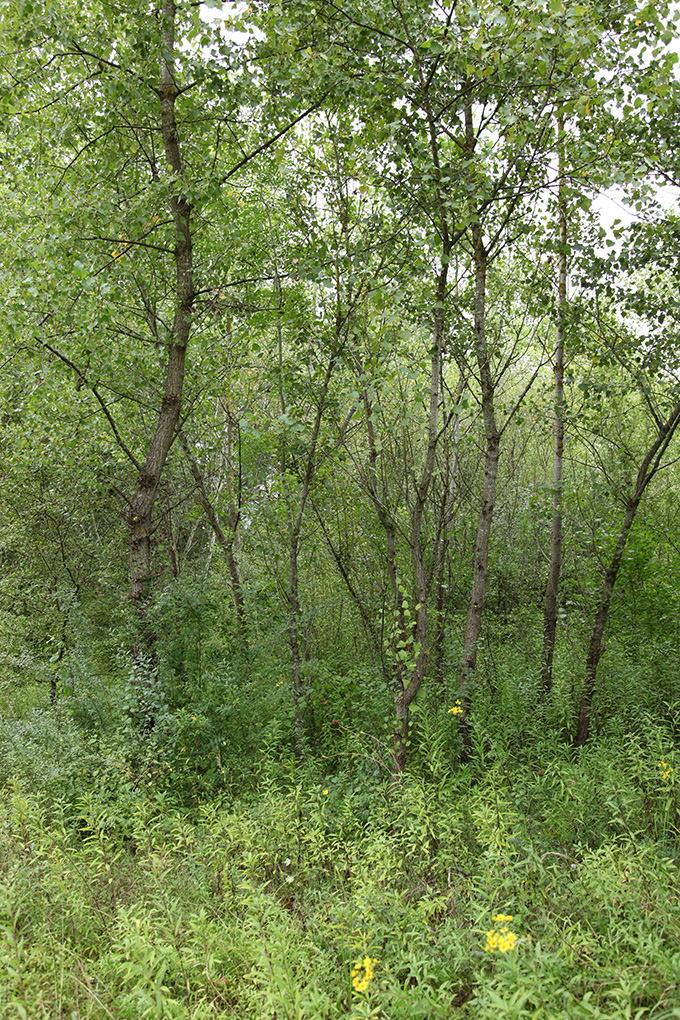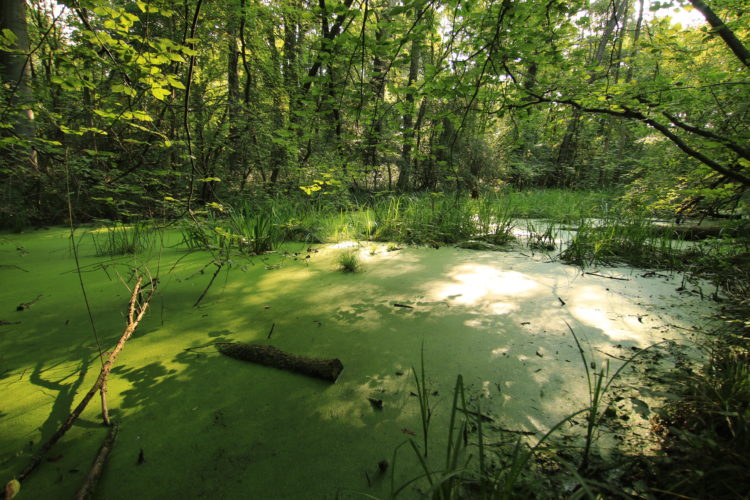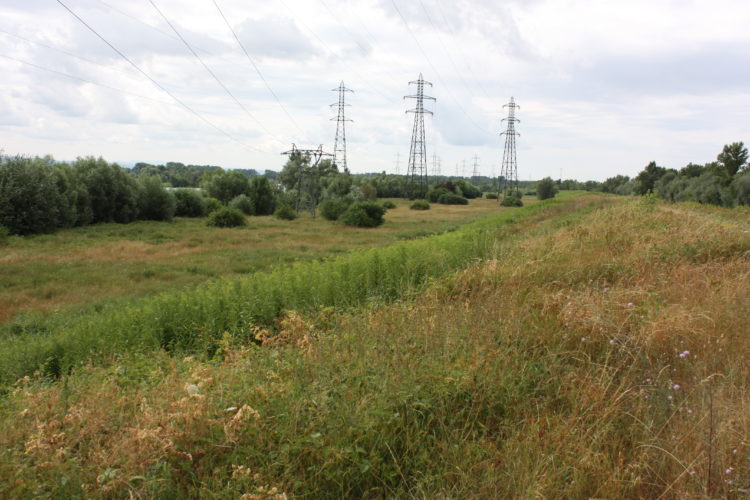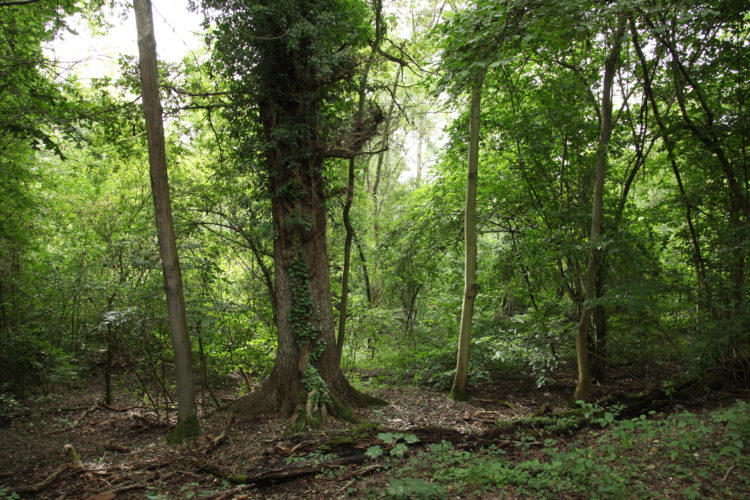
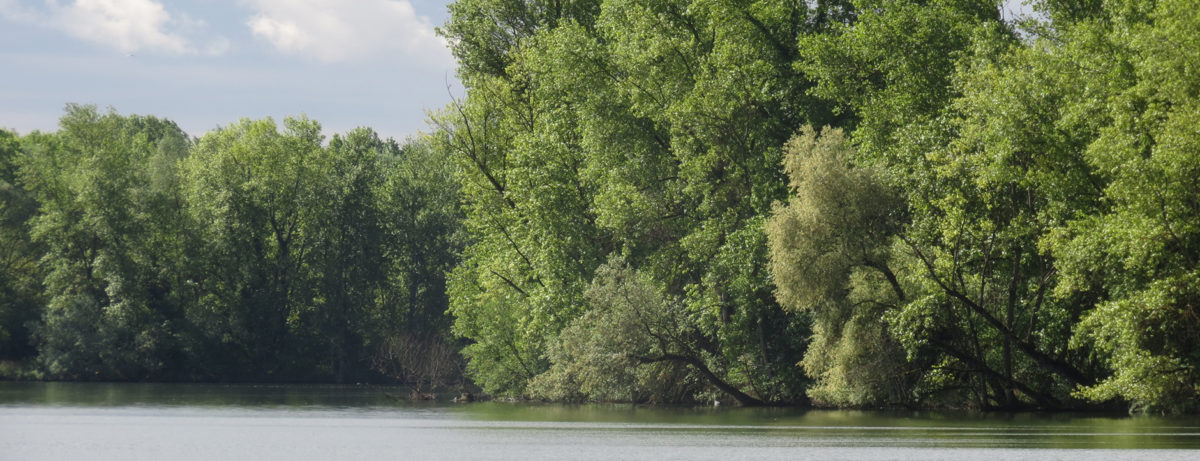
Softwood Alluvial Forests
The softwood alluvial forest: the pioneer stage in forest dynamics
Consisting of willow and poplar trees, the softwood forest can be recognized by its typical blue-gray color due to the abundance of white willows and bitter willows. Light-loving, the species in this afforestation colonize exposed surfaces or point bars newly built up after flooding, as well as holes created by windthrown trees [1] in the forest cover. This afforestation is the result of the pioneer stage of forest dynamics in an alluvial environment.
The complete canalization of the Rhine by humans since the 1970s has brought alluvial dynamics to a complete stop. The areas exposed by heavy flooding no longer appear along the river and the softwood forest is unable to find a place to grow. At Rohrschollen, this forest facies can still be found in the substitution habitats which are the areas cleared during the canalization of the Rhine and a former car park dating from before the site was classified as a Nature Reserve.
However, the recent alluvial dynamic restoration project is now injecting a high volume of water into the Bauerngrundwasser when the Rhine floods. This injection has caused the erosion of certain banks, the accumulation of gravel bars and the uprooting of large trees, creating exposed areas which are soon colonized by young willow and poplar trees that make up the softwood forest.
Linked to a river with a natural dynamic, this habitat is recognized as being of community interest by the European Union. Because of this habitat, a site has been included in the network Natura 2000.
It is designated, according to the Natura 2000 nomenclature, as: 91E0* Alluvial forests of Alnus glutinosa and Fraxinus excelsior (Alno-Padion, Alnion incanae, Salicion albae).
[1] Windthrow refers to trees that are uprooted and have fallen to the ground by the wind. The uprooted tree forms a gap in the forest cover that is taken over by pioneer species thereby regenerating the forest.
2014: Completion of the LIFE+ project that set out to restore the alluvial character on the island, and created the conditions favorable for the renewal of this habitat.
Source : EMS
